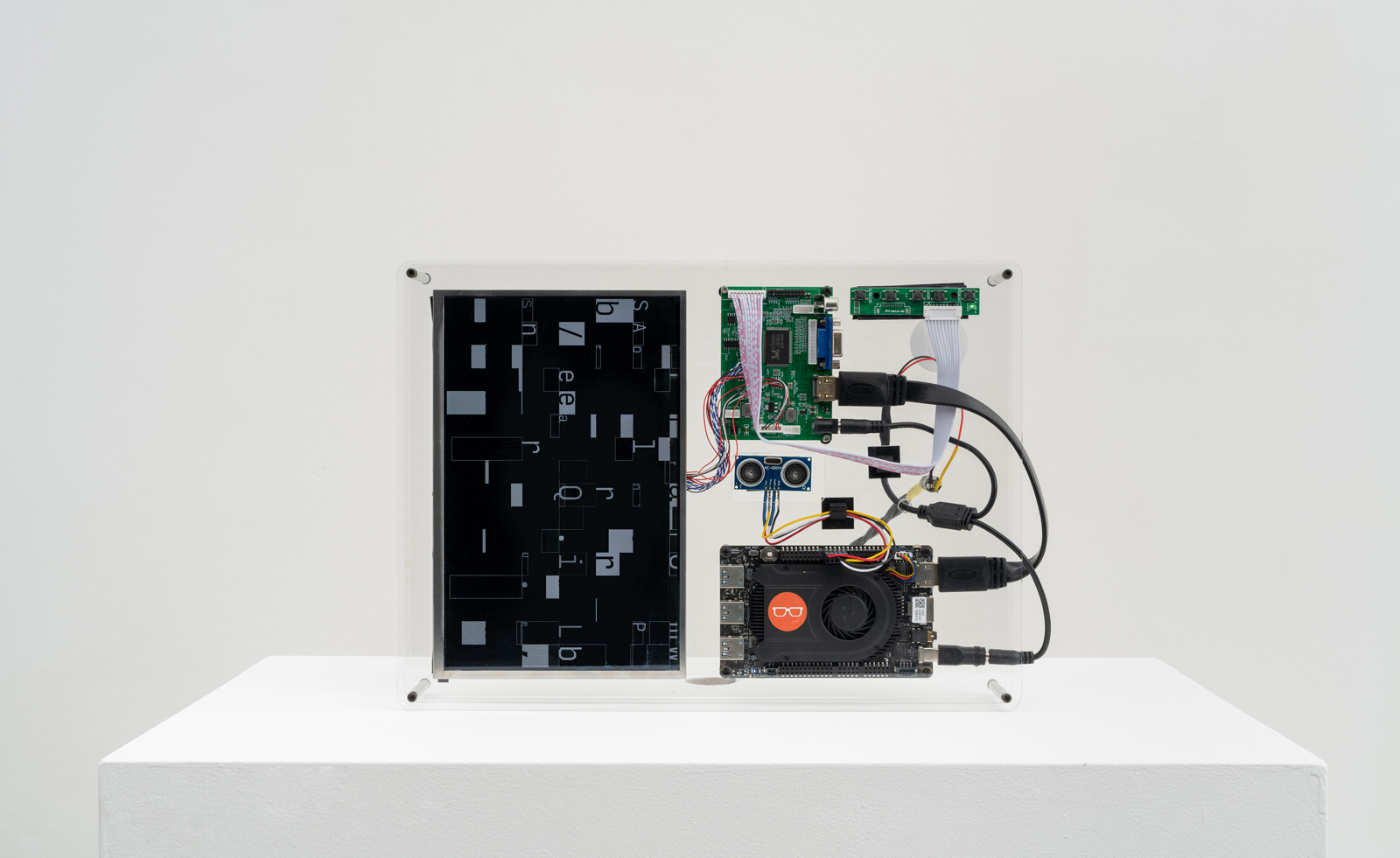Delve into next-generation digital art with Tyler Hobbs, Ernest Edmonds and Monica Rizzolli at Gazelli Art House
An exhibition at Gazelli Art House, ‘GEN/GEN: Generative Generations’, takes us into the new dimension of digital art

Harold Cohen was one of the first to eschew the boundaries between machine intelligence and human creativity, with his work in the 1980s, created with a computer programme – AARON – designed to allow the artist to produce work independently. His adventures with code marked the beginning of a new era of digital art, which has since evolved to encompass interactive sculptures, artworks on paper created by plotter, and avant-garde generative art.
Now, a new exhibition traces this young history. ‘GEN/GEN: Generative Generations’ at Gazelli Art House in London considers the issue through work from Loren Bednar, Darien Brito, Sougwen Chung, Harold Cohen, Brendan Dawes, Ernest Edmonds, Licia He, Tyler Hobbs, Ben Kovach, William Latham, Rhea Myers, Piter Pasma, Monica Rizzolli, Melissa Wiederrecht and Stephen Willats.

Rhea Myers, Surgical Strike, 1996. Series of 12 Prints Gloss C-Print on paper
For Gazelli Art House, which has partnered with tech partner Verisart for the exhibition, it marks a shift towards a greater understanding, and appreciation of, digital art. ‘We wanted to draw parallels with historical developments in generative and computer arts overall,’ says gallery founder Mila Askarova. ‘Our initial interest in the field was kicked off by the group show “Code of Arms” in 2021, which had more of a historical take on the development of computer arts overall.
‘We then started working with the Harold Cohen estate, which resulted in the “AARON Retrospective” exhibition in October 2022,’ she continues. ‘Ahead of Cohen’s anticipated solo exhibition at the Whitney Museum of Art in spring 2023, it was important to position his/AARON’s work amongst some of his contemporaries – Edward Edmonds, William Latham and Stephen Willats – and bring out some of the most active and exciting voices in the generative art scene today to respond to his work.’

William Latham, Mutator1. Zapx6red-13 (also known as The Second Listening Room), 1990 – 2023. Print on high-grade paper and original digital file
Works featured in ‘GEN/GEN: Generative Generations’, created across six decades, are eclectic, including fractal geometrist Ernest Edmonds’ U-matic tape recordings of AI-programmed film, and a new version of Brendan Dawes’ Cinema Redux series, originally based on Fritz Lang’s Metropolis.
‘Interestingly, questions around and resistance to the idea of using a computer as a tool to create artwork have remained over its six-decade evolution,’ Askarova says. ‘The tech has become more complicated and is accessible to many more today. And yet, there are still concerns that have been vocalised, from authenticity to preservation of digital artworks, which we hope to address with this show.’

Stephen Willats, VDU Transformation Series No. 11, 1993. Poster paint, pencil, Letraset text on paper
Verisart, one of the first companies to introduce blockchain into the art industry, felt like a natural partner. ‘“GEN/GEN” is our first co-curated exhibition, and we discussed the scope of the exhibition spanning several decades and also the artists we both wanted to feature. It's very much a collaborative process, where we both learn from each other and share best practices and information gathering in this exciting new, generative art world. We hope this will be the start of many more exhibitions to come, where we can tackle the challenges of bridging the digital and physical realms both on the front and back end.’
Wallpaper* Newsletter
Receive our daily digest of inspiration, escapism and design stories from around the world direct to your inbox.
‘GEN/GEN: Generative Generations’ is at Gazelli Art House, London. from 8 September - 7 October 2023

Piter Pasma, Schotter 3D, 2020. Plotter artwork (black pen on paper) and NFT
Hannah Silver is the Art, Culture, Watches & Jewellery Editor of Wallpaper*. Since joining in 2019, she has overseen offbeat design trends and in-depth profiles, and written extensively across the worlds of culture and luxury. She enjoys meeting artists and designers, viewing exhibitions and conducting interviews on her frequent travels.
-
 Marylebone restaurant Nina turns up the volume on Italian dining
Marylebone restaurant Nina turns up the volume on Italian diningAt Nina, don’t expect a view of the Amalfi Coast. Do expect pasta, leopard print and industrial chic
By Sofia de la Cruz
-
 Tour the wonderful homes of ‘Casa Mexicana’, an ode to residential architecture in Mexico
Tour the wonderful homes of ‘Casa Mexicana’, an ode to residential architecture in Mexico‘Casa Mexicana’ is a new book celebrating the country’s residential architecture, highlighting its influence across the world
By Ellie Stathaki
-
 Jonathan Anderson is heading to Dior Men
Jonathan Anderson is heading to Dior MenAfter months of speculation, it has been confirmed this morning that Jonathan Anderson, who left Loewe earlier this year, is the successor to Kim Jones at Dior Men
By Jack Moss